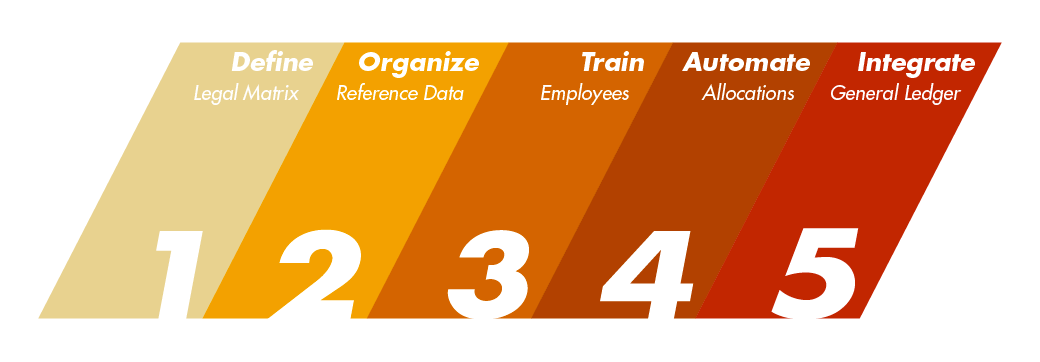Expense Allocation
5 Steps to Automate Deal Expense Allocations

Learn the five steps private equity can take to automate deal expense allocations, improve efficiency, and ensure compliance.
Kevin O'Keeffe
May 11, 2020
Amid a global recession, expense allocation, and its effect on P&L, is more important than ever. Unfortunately, allocating expenses remains an intricate, time-consuming process, whose mistakes often carry an SEC penalty. For private equity, who must factor deals into their allocations, the expense picture is even more challenging. If allocating expenses is hard, allocating deal expenses is harder.
Where a typical expense is associated with a single invoice, deals usually involve travel, which requires the collection of employee expense reports. Where invoice allocations reflect a snapshot in time, deals exist in a state of flux, constantly changing as they move through their life cycle. So not only are deal allocations more complex to begin with, they must be repeatedly updated until they break or close.
How can private equity simplify deal expense allocations? Using its experience gathered from over four years of implementing expense allocation solutions, IntegriDATA has identified five steps private equity can take to automate deal allocations, improve efficiency, and ensure compliance.

1. Define your expense legal matrix
A thorough expense legal matrix is the first step and foundation for allocating deal expenses. An expense legal matrix is a compliance document that defines what, how, when, and to who expenses can be allocated. Industry best practice is to establish an expense legal matrix around business purpose and expense type. For most, deal-related expenses will be categorized as due diligence, portfolio monitoring, or deal oversight. Using a clear expense legal matrix, compliance can remove ambiguity, thereby mitigating risk, when it comes time for accounting to allocate.
2. Organize your reference data
Disorganized data makes your process vulnerable to breaks and errors. Clean, consistent reference data allows for proper expense tagging, accurate allocations, and integrations between allocation related systems. To get started, organize deal names, status, fund ownership, and other reference data around a golden or master copy. This single source of truth standardizes data, enabling synchronization between systems. Organized reference data enables an assembly line-like process with consistent inputs, faster processing, and little room for error.
3. Train your employees
Any process is only as good as its source data. Deal expenses are often travel-related, making its data source employee expense reports. As the source of deal expense data, it is critically important employees are trained to tag their expenses with the correct deal code and business purpose at the time of capture. Adding these key details a red-eye flight or two later is inefficient at best. And the benefits for a bit more upfront effort? Straight-through expense allocations and employees who are no longer hassled by accounting for incomplete expense reports.
4. Automate your allocation process
You’re now ready to supercharge deal expense allocations using automation. Automating allocations with software, like IntegriDATA EAS, speeds up processing, saving your team time and effort. When allocating deals, allocation software continually evaluates each deal throughout its lifecycle. For example, if a deal is pending, the allocated expenses are left on the deal or booked to a holding entity; when the deal consummates or breaks, the deal’s expenses are automatically reallocated according to policy. Your policy may have dead deal expenses eaten by the management company and live deals passed on to the investing funds. Whatever your policy, expense allocation software can be configured to execute it automatically.
5. Integrate with your general ledger
Integrating your allocation software with your general ledger is the final step in achieving expense allocation nirvana. Deals can sit in a pending state for months and it’s important to keep your books and records up to date throughout their lifecycle. For example, if a deal is pending, most firms book entries to the general ledger showing a balance on the deal or holding entity. When the deal closes, integration with the general ledger enables your allocation software to reallocate the deal’s expenses, reversing out the pending deal transactions and replacing them with receivables associated with the deal’s investing funds. Simultaneously, invoices can even be created and sent to the funds to expedite reimbursement.
***
Over four years, IntegriDATA’s approach has helped dozens of investment managers automate expense allocations. The results have saved their team time and energy while ensuring compliance with investor and SEC expectations.
To learn more about how IntegriDATA and EAS can help, contact us or visit the EAS website.